fruits
Fruit


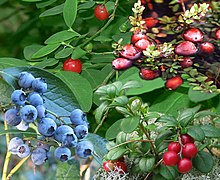
a fruit is the seed-bearing structure in flowering plants (also known as angiosperms) formed from the ovary after flowering.
Fruits are the means by which angiosperms disseminate seeds. Edible fruits, in particular, have propagated with the movements of humans and animals in a symbiotic relationship as a means for seed dispersal and nutrition; in fact, humans and many animals have become dependent on fruits as a source of food.[1] Accordingly, fruits account for a substantial fraction of the world's agricultural output, and some (such as the apple and the pomegranate) have acquired extensive cultural and symbolic meanings.
In common language usage, "fruit" normally means the fleshy seed-associated structures of a plant that are sweet or sour, and edible in the raw state, such as apples, bananas, grapes, lemons, oranges, and strawberries. On the other hand, in botanical usage, "fruit" includes many structures that are not commonly called "fruits", such as bean pods, corn kernels, tomatoes, and wheat grains.[2][3] The section of a fungus that produces spores is also called a fruiting body
Botanic fruit and culinary fruit
Many common terms for seeds and fruit do not correspond to the botanical classifications. In culinary terminology, a fruit is usually any sweet-tasting plant part, especially a botanical fruit; a nut is any hard, oily, and shelled plant product; and a vegetable is any savory or less sweet plant product.[5] However, in botany, a fruit is the ripened ovary or carpel that contains seeds, a nut is a type of fruit and not a seed, and a seed is a ripened ovule.[6]
Examples of culinary "vegetables" and nuts that are botanically fruit include corn, cucurbits (e.g., cucumber, pumpkin, and squash), eggplant, legumes (beans, peanuts, and peas), sweet pepper, and tomato. In addition, some spices, such as allspice and chili pepper, are fruits, botanically speaking.[6] In contrast, rhubarb is often referred to as a fruit, because it is used to make sweet desserts such as pies, though only the petiole (leaf stalk) of the rhubarb plant is edible,[7] and edible gymnosperm seeds are often given fruit names, e.g., ginkgo nuts and pine nuts.
Botanically, a cereal grain, such as corn, rice, or wheat, is also a kind of fruit, termed a caryopsis. However, the fruit wall is very thin and is fused to the seed coat, so almost all of the edible grain is actually a seed
Structure
The outer, often edible layer, is the pericarp, formed from the ovary and surrounding the seeds, although in some species other tissues contribute to or form the edible portion. The pericarp may be described in three layers from outer to inner, the epicarp, mesocarp and endocarp.
Fruit that bears a prominent pointed terminal projection is said to be beaked
Development
A fruit results from maturation of one or more flowers, and the gynoecium of the flower(s) forms all or part of the fruit.[10]
Inside the ovary/ovaries are one or more ovules where the megagametophyte contains the egg cell.[11] After double fertilization, these ovules will become seeds. The ovules are fertilized in a process that starts with pollination, which involves the movement of pollen from the stamens to the stigma of flowers. After pollination, a tube grows from the pollen through the stigma into the ovary to the ovule and two sperm are transferred from the pollen to the megagametophyte. Within the megagametophyte one of the two sperm unites with the egg, forming a zygote, and the second sperm enters the central cell forming the endosperm mother cell, which completes the double fertilization process.[12][13] Later the zygote will give rise to the embryo of the seed, and the endosperm mother cell will give rise to endosperm, a nutritive tissue used by the embryo.
As the ovules develop into seeds, the ovary begins to ripen and the ovary wall, the pericarp, may become fleshy (as in berries or drupes), or form a hard outer covering (as in nuts). In some multiseeded fruits, the extent to which the flesh develops is proportional to the number of fertilized ovules.[14] The pericarp is often differentiated into two or three distinct layers called the exocarp (outer layer, also called epicarp), mesocarp (middle layer), and endocarp (inner layer). In some fruits, especially simple fruits derived from an inferior ovary, other parts of the flower (such as the floral tube, including the petals, sepals, and stamens), fuse with the ovary and ripen with it. In other cases, the sepals, petals and/or stamens and style of the flower fall off. When such other floral parts are a significant part of the fruit, it is called an accessory fruit. Since other parts of the flower may contribute to the structure of the fruit, it is important to study flower structure to understand how a particular fruit forms.[3]
There are three general modes of fruit development:
- Apocarpous fruits develop from a single flower having one or more separate carpels, and they are the simplest fruits.
- Syncarpous fruits develop from a single gynoecium having two or more carpels fused together.
- Multiple fruits form from many different flowers.
Plant scientists have grouped fruits into three main groups, simple fruits, aggregate fruits, and composite or multiple fruits.[15] The groupings are not evolutionarily relevant, since many diverse plant taxa may be in the same group, but reflect how the flower organs are arranged and how the fruits develop.
Simple fruit
Simple fruits can be either dry or fleshy, and result from the ripening of a simple or compound ovary in a flower with only one pistil. Dry fruits may be either dehiscent (they open to discharge seeds), or indehiscent (they do not open to discharge seeds).[16] Types of dry, simple fruits, and examples of each, include:
- achene – Most commonly seen in aggregate fruits (e.g., strawberry)
- capsule – (e.g., Brazil nut)
- caryopsis – (e.g., wheat)
- cypsela – an achene-like fruit derived from the individual florets in a capitulum (e.g., dandelion).
- fibrous drupe – (e.g., coconut, walnut)
- follicle – is formed from a single carpel, opens by one suture (e.g., milkweed), commonly seen in aggregate fruits (e.g., magnolia)
- legume – (e.g., bean, pea, peanut)
- loment – a type of indehiscent legume
- nut – (e.g., beech, hazelnut, oak acorn)
- samara – (e.g., ash, elm, maple key)
- schizocarp – (e.g., carrot seed)
- silique – (e.g., radish seed)
- silicle – (e.g., shepherd's purse)
- utricle – (e.g., beet)
Fruits in which part or all of the pericarp (fruit wall) is fleshy at maturity are simple fleshy fruits. Types of simple, fleshy, fruits (with examples) include:
- berry – (e.g., cranberry, gooseberry, redcurrant, tomato)
- stone fruit or drupe (e.g., apricot, cherry, olive, peach, plum)
An aggregate fruit, or etaerio, develops from a single flower with numerous simple pistils.[17]
- Magnolia and peony, collection of follicles developing from one flower.
- Sweet gum, collection of capsules.
- Sycamore, collection of achenes.
- Teasel, collection of cypsellas
- Tuliptree, collection of samaras.
The pome fruits of the family Rosaceae, (including apples, pears, rosehips, and saskatoon berry) are a syncarpous fleshy fruit, a simple fruit, developing from a half-inferior ovary.[18]
Schizocarp fruits form from a syncarpous ovary and do not really dehisce, but rather split into segments with one or more seeds; they include a number of different forms from a wide range of families.[15] Carrot seed is an example.
Aggregate fruit
Aggregate fruits form from single flowers that have multiple carpels which are not joined together, i.e. each pistil contains one carpel. Each pistil forms a fruitlet, and collectively the fruitlets are called an etaerio. Four types of aggregate fruits include etaerios of achenes, follicles, drupelets, and berries. Ranunculaceae species, including Clematis and Ranunculus have an etaerio of achenes, Calotropis has an etaerio of follicles, and Rubus species like raspberry, have an etaerio of drupelets. Annona have an etaerio of berries.[19][20]
The raspberry, whose pistils are termed drupelets because each is like a small drupe attached to the receptacle. In some bramble fruits (such as blackberry) the receptacle is elongated and part of the ripe fruit, making the blackberry an aggregate-accessory fruit.[21] The strawberry is also an aggregate-accessory fruit, only one in which the seeds are contained in achenes.[22] In all these examples, the fruit develops from a single flower with numerous pistils.
Multiple fruits
A multiple fruit is one formed from a cluster of flowers (called an inflorescence). Each flower produces a fruit, but these mature into a single mass.[23] Examples are the pineapple, fig, mulberry, osage-orange, and breadfruit.
In the photograph on the right, stages of flowering and fruit development in the noni or Indian mulberry (Morinda citrifolia) can be observed on a single branch. First an inflorescence of white flowers called a head is produced. After fertilization, each flower develops into a drupe, and as the drupes expand, they become connate (merge) into a multiple fleshy fruit called a syncarp.
Berries
Berries are another type of fleshy fruit; they are simple fruit created from a single ovary.[24] The ovary may be compound, with several carpels. Types include (examples follow in the table below):
- Pepo – berries whose skin is hardened, cucurbits
- Hesperidium – berries with a rind and a juicy interior, like most citrus fruit
Accessory fruit
Some or all of the edible part of accessory fruit is not generated by the ovary. Accessory fruit can be simple, aggregate, or multiple, i.e., they can include one or more pistils and other parts from the same flower, or the pistils and other parts of many flowers.
Seedless fruits
Seedlessness is an important feature of some fruits of commerce. Commercial cultivars of bananas and pineapples are examples of seedless fruits. Some cultivars of citrus fruits (especially grapefruit, mandarin oranges, navel oranges), satsumas, table grapes, and watermelons are valued for their seedlessness. In some species, seedlessness is the result of parthenocarpy, where fruits set without fertilization. Parthenocarpic fruit set may or may not require pollination, but most seedless citrus fruits require a stimulus from pollination to produce fruit.
Seedless bananas and grapes are triploids, and seedlessness results from the abortion of the embryonic plant that is produced by fertilization, a phenomenon known as stenospermocarpy, which requires normal pollination and fertilization.[25]
Seed dissemination
Variations in fruit structures largely depend on their seeds' mode of dispersal. This dispersal can be achieved by animals, explosive dehiscence, water, or wind.[26]
Some fruits have coats covered with spikes or hooked burrs, either to prevent themselves from being eaten by animals, or to stick to the feathers, hairs, or legs of animals, using them as dispersal agents. Examples include cocklebur and unicorn plant.[27][28]
The sweet flesh of many fruits is "deliberately" appealing to animals, so that the seeds held within are eaten and "unwittingly" carried away and deposited (i.e., defecated) at a distance from the parent. Likewise, the nutritious, oily kernels of nuts are appealing to rodents (such as squirrels), which hoard them in the soil to avoid starving during the winter, thus giving those seeds that remain uneaten the chance to germinate and grow into a new plant away from their parent.[6]
Other fruits are elongated and flattened out naturally, and so become thin, like wings or helicopter blades, e.g., elm, maple, and tuliptree. This is an evolutionary mechanism to increase dispersal distance away from the parent, via wind. Other wind-dispersed fruit have tiny "parachutes", e.g., dandelion, milkweed, salsify.[26]
Coconut fruits can float thousands of miles in the ocean to spread seeds. Some other fruits that can disperse via water are nipa palm and screw pine.[26]
Some fruits fling seeds substantial distances (up to 100 m in sandbox tree) via explosive dehiscence or other mechanisms, e.g., impatiens and squirting cucumber.[29]
fruits
![fruits]() Reviewed by moviebuzz
on
August 01, 2018
Rating:
Reviewed by moviebuzz
on
August 01, 2018
Rating:

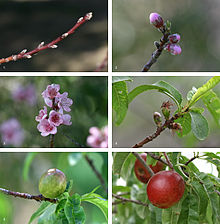
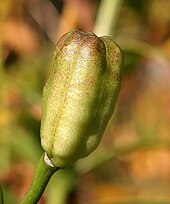
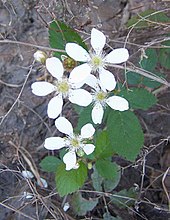


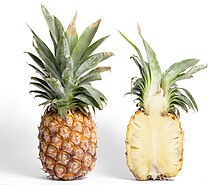







No comments: